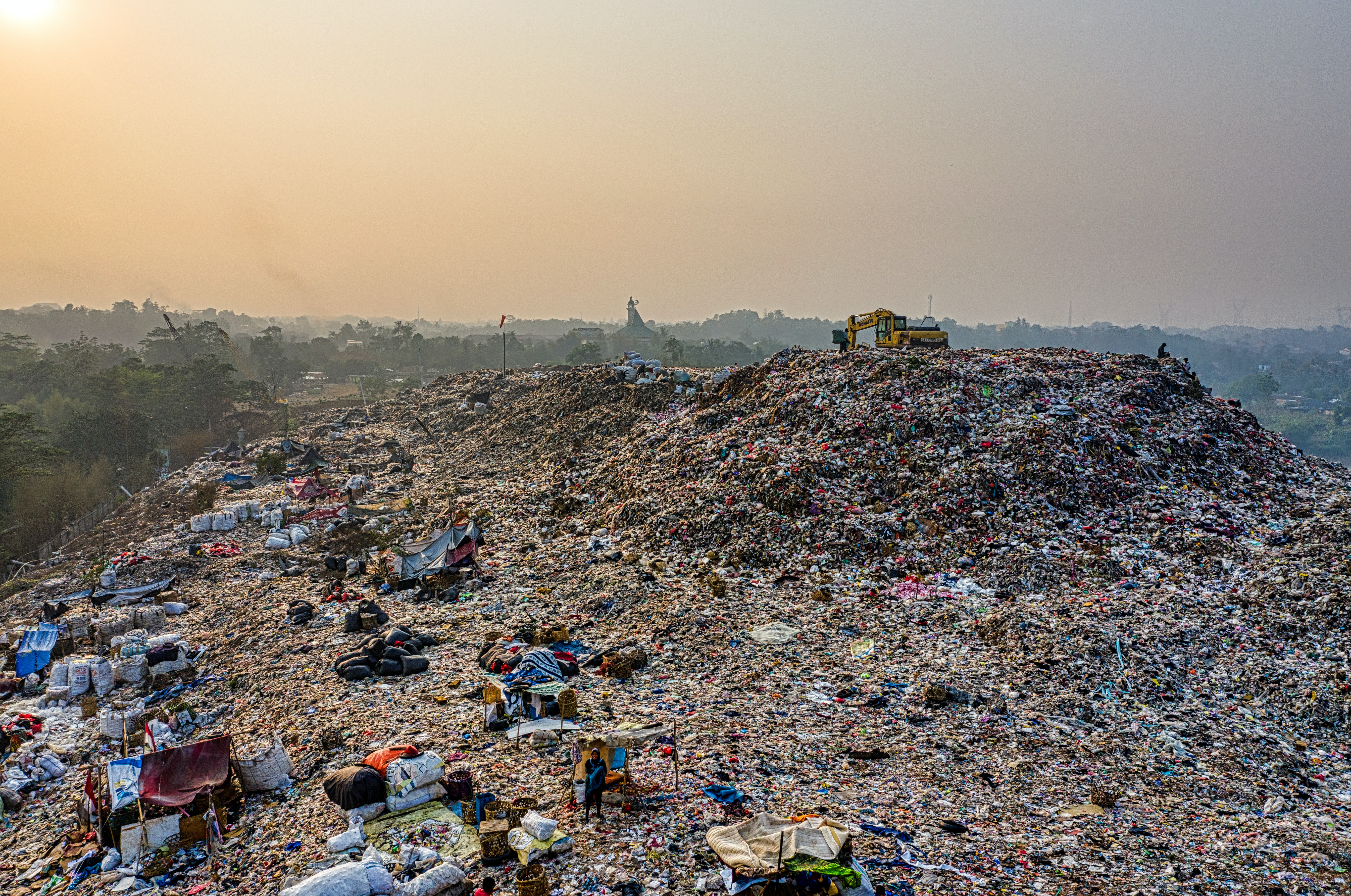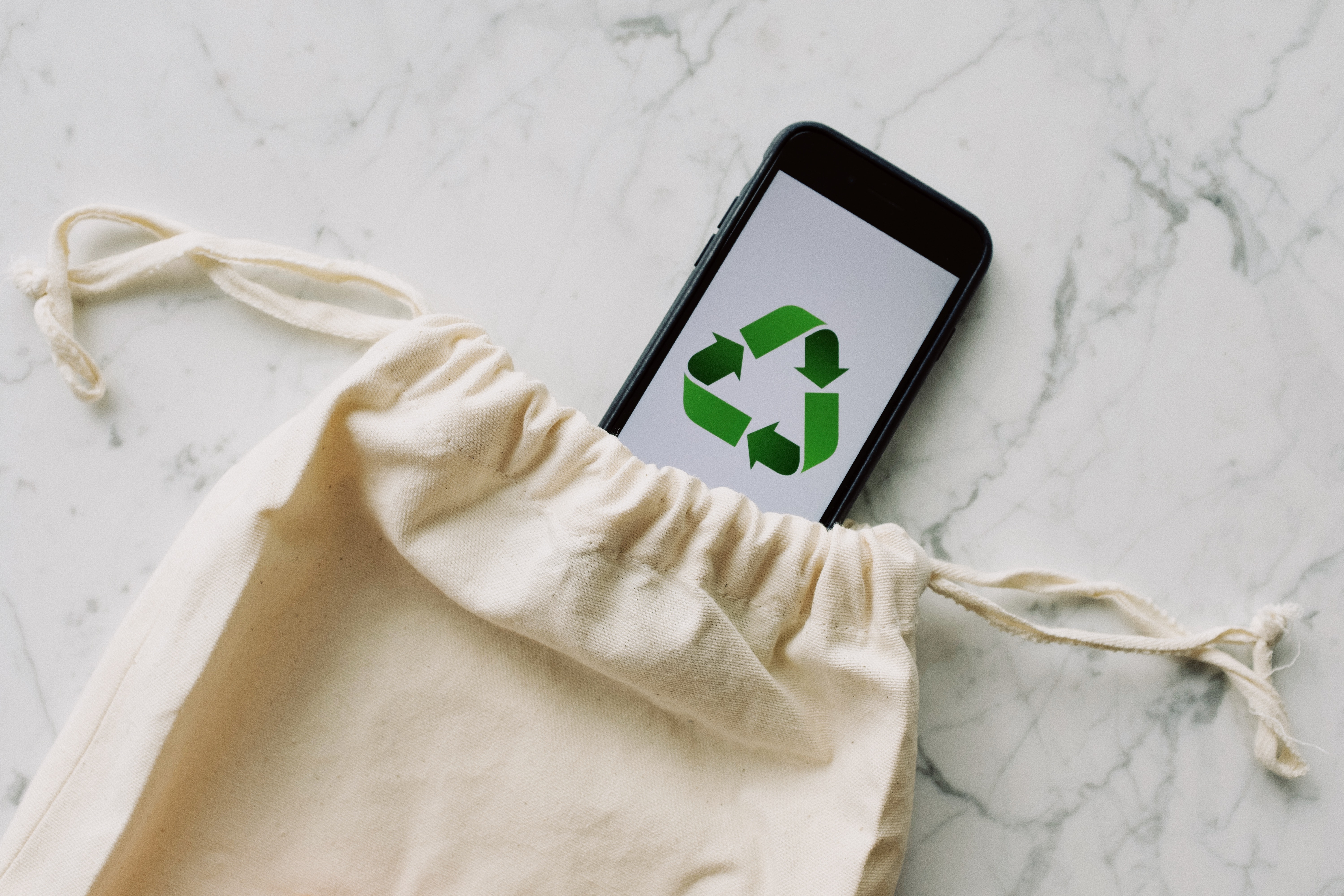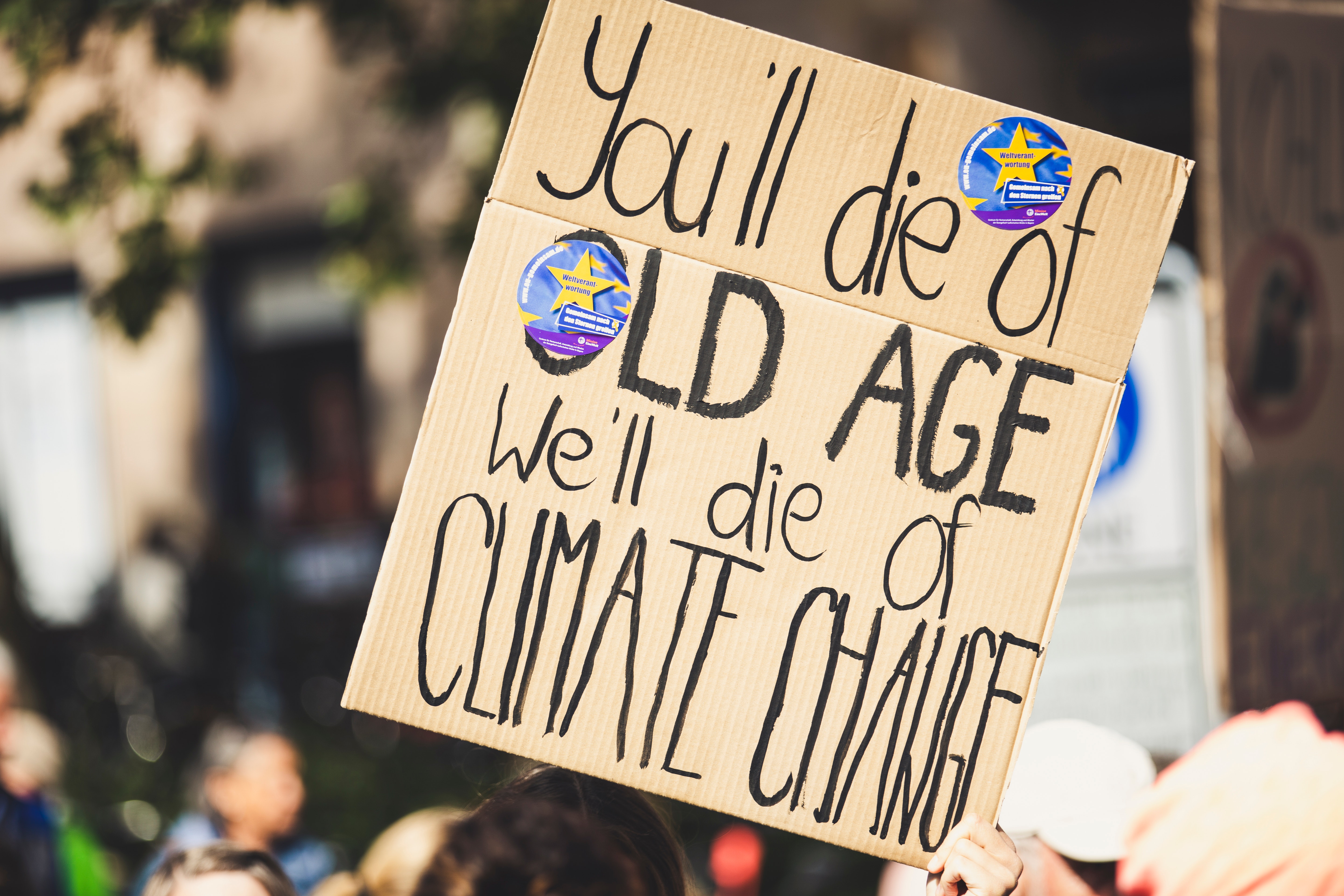Forget bold shoulders, midriff floss and disco-ball sequins – the hottest trend in fashion nowadays is less of a look and more of a lifestyle. To wit, sustainability. Buzzwords such as “ethical”, “conscious”, “upcycled”, “carbon-neutral” and “transparent” have exploded in popularity in recent seasons, spreading like wildfire over social media and across runways from London to Lagos. Which is great, isn’t it? Well, yes and no.
The pursuit of sustainability is, ostensibly, a noble one. After all, according to renowned naturalist Sir David Attenborough, the climate crisis is the “biggest threat to security that modern humans have ever faced”. And given that fashion makes a sizeable contribution to climate change – to cite just one eye-opening statistic, the industry’s annual rate of greenhouse gas emissions is roughly equivalent to that of the entire economies of Germany, France and the United Kingdom combined – having designers and brands take proactive steps to mitigate and minimise the industry’s environmental impact should be a boon. In theory, anyway. Because while there’s no doubt that a handful of fashion houses are truly dedicated to the cause, it seems a good many are merely paying lip service to sustainability.
READ: Is the Sustainable Development of Singapore an Inevitable Oxymoron?

The sins of greenwashing
Enter the problem of greenwashing. Coined by American environmentalist Jay Westerveld in the 1980s (although the phenomenon dates back even further), the term “greenwashing” describes a company that capitalises on the increasing public interest in sustainability by making unsubstantiated, exaggerated claims about the environmental and/or ethical benefits of its practices and products. Often, a company that engages in greenwashing spends more time, energy and money on marketing itself as sustainable than on actually undertaking the hard work to advance sustainability.
Greenwashing comes in many different guises but almost all of its forms are rooted in the so-called Seven Sins of Greenwashing, namely:
1. Sin of the Hidden Trade-Off
Advertising a product as sustainable based on a narrow set of attributes while ignoring other important socio-ecological issues. For example, a shirt made of recycled polyester may require less energy to manufacture than one made of virgin polyester, but it would still release microfibres into the environment, thus, in effect, exacerbating the scourge of plastic pollution.
2. Sin of No Proof
Making a claim that is not backed up by readily accessible evidence (e.g. on the garment label or on the brand’s website) and/or a reliable third-party certification.
3. Sin of Vagueness
Employing terms that are too broad or too poorly defined to be properly understood in marketing a product, such as “all-natural”, “eco-friendly” and “non-toxic”.
4. Sin of Irrelevance
Emphasising a claim that is technically true, but is unimportant and/or unrelated to the product in question.
5. Sin of Worshipping False Labels
Using misleading words and images to imply that a product has a third-party endorsement when in reality no such thing exists. For example, touting a product as “vegan approved” instead of obtaining an official certification by PETA.
6. Sin of Lesser of Two Evils
Declaring that a product is greener than others in its category, when the category as a whole may be unsustainable. For example, highlighting that a bag is crafted from eco-leather (i.e. animals skins that are tanned and dyed with vegetable matter and plant extracts rather than chromium and other chemicals), when the use of leather in general has a detrimental impact on the environment, whether it’s real leather, faux leather or eco-leather.
7. The Sin of Fibbing
Promoting a claim that is blatantly false.
READ: I Try Going Zero Waste for a Week…and Failed
The drivers of greenwashing
There are a number of forces at work behind this troubling trend. For starters, the very concept of sustainability lacks a clear, quantifiable definition, leaving a gaping loophole wherein companies cannot and are not held accountable for their actions (or non-actions) by the law. A dearth of empirical data and government-funded research on the impact of fashion on people and planet only adds to the ambiguity surrounding sustainability.
At the same time, scarce public awareness around and insufficient education on what really goes on behind-the-scenes in the fashion industry means not only that consumers are easily deceived by the smoke and mirrors of greenwashing, but also that companies can disseminate fake news without having to worry about getting cancelled or called out.

Moreover, as the idea of sustainable fashion continues to gain traction, brands are now all too eager to jump on the bandwagon and, quite literally, bank on this rapidly growing interest and demand. A 2015 Nielsen poll demonstrated that 66 per cent of global consumers would be willing to spend more on a product that’s sustainable, while fashion shopping platform Lyst reported a 37 per cent spike in searches for sustainability-related keywords amid the pandemic, with average monthly searches rising from 27,000 in 2019 to over 32,000 in 2020.
However, sustainability isn’t something that can be achieved overnight. Time, effort and resources are needed to integrate a sustainable approach into every aspect of a business, and the bigger the brand, the more challenging it is to effect positive change. As such, it’s understandable but deplorable that companies should take the easy way out and go for the quick fix of painting a “green sheen” rather than bringing about a real transformation.
On top of that, there exist deeper, structural reasons as to why many of the industry’s claims regarding sustainability sound hollow. Between brands and manufacturers lie a vast distance and a complex supply chain comprising layers upon layers of contractors and subcontractors, and very few brands can actually trace the full journey of a design from raw material source to finished product. Which means that the majority of brands are, either intentionally or ignorantly, making claims based on conjecture and not facts.
READ: Managed vs Wild Nature: Finding a Balance in Land-Scarce Singapore
The ramifications of greenwashing
But what’s the fuss over greenwashing? As the adage goes, what you don’t know can’t hurt you, right? Wrong. Greenwashing isn’t just an ill-advised PR strategy; it carries serious consequences, not only for the reputation of the company involved – which, in all honesty, we couldn’t care less about, because a brand that greenwashes ought to pay the price – but also for people and planet.
One of the key dangers of greenwashing is that it can mislead people with good intentions into harming, instead of helping, the environment. Imagine that you’re trying to lighten your ecological footprint, and so you choose to shop exclusively from supposedly sustainable brands. But if the green claims made by those brands turn out to be a bunch of baloney, then you’ve inadvertently aggravated the situation that you set out to ameliorate. That, in turn, could sow mistrust and cause you to lose faith in the sustainability movement altogether (because nobody likes to be lied to), thereby hampering and maybe even halting environmental progress.
The way forward from greenwashing
All of which begs the question: What can be done to slay the multi-headed beast that is greenwashing?
Implementing and enforcing regulation would be a solid starting point. In Norway, for instance, the government came down hard on Hennes & Mauritz (aka H&M) and insisted the fast fashion giant issue a public apology after an investigation by the Norwegian Consumer Authority in 2019 revealed that the chain’s much-hyped Conscious Collection violated the country’s marketing laws by misrepresenting its “sustainability credentials” through “symbols, statements and colours”.
Meanwhile, in the United States, the Federal Trade Commission (FTC) imposed civil penalties on big retailers like Amazon, Nordstrom, Sears and Macy’s in 2013 and 2015 for deceptively labelling and marketing rayon apparel as environmentally-friendly bamboo. The FTC also laid out an exhaustive set of rules in its Green Guides that stipulates how companies should and should not incorporate environmental claims in their advertising.

Coordinated policy action from the top down could therefore prove efficacious in curbing the proliferation of greenwashing in the industry, be it appointing a fashion czar to oversee sustainability efforts, establishing binding legal obligations on eco-labelling, encouraging the adoption of sustainability-related standards (e.g. those in the ISO 14000 family), developing universal green certifications similar to that used in the organic food sector, introducing a punishment mechanism for breaches of ethics and more.
On their part, brands need to recognise that embracing sustainability is an unshirkable responsibility that should be borne by any 21st-century business, and also that it’s nowhere near good enough to merely dip a toe in the waters and then go back to business-as-usual. True commitment to sustainability calls for a full-on plunge – a holistic, inclusive approach that encompasses everything from material innovation and improved recycling processes to fair wages and workers’ rights, with the requisite accountability and traceability to boot. Yes, undoubtedly, it is a considerable investment that upends the low cost, high volume model that countless companies (particularly in fast fashion) rely on, but there is a lot at stake here, like, you know, the fate of future generations. On the flip side, brands that aren’t yet ready to go the whole nine yards ought to own up to it instead of hiding behind a façade of hypocritical respectability.

Of course, we ourselves play an important role in the conversation around sustainability and greenwashing. Some things are beyond our control, but as ethically- and environmentally-minded consumers, we can nevertheless educate ourselves on the issues at hand. Knowledge is power and the more we understand, the more forceful we can be in demanding change.
Do your research before you make a purchase – we suggest the Good On You platform and the Ecolabel Index – and when in doubt, never feel embarrassed to message a brand for clarification on your concerns. Don’t just boycott the brands you know are guilty of greenwashing, either. Use your voice and spread the word in your community or call them out on social media (please, though, no trolling). You can also sign petitions to help hold fashion brands accountable, like this Pay Up one.
Probably the smartest thing you can do, however, would be to switch up your own wardrobe habits. Singaporeans love a good bargain, and the appeal of cheap clothing by brands like Zara and H&M is undeniable, but fast fashion chains are among the biggest culprits of greenwashing, not to mention waste, pollution and labour exploitation. So, where possible, try to buy vintage or secondhand, and when you do buy new, opt for independent, local labels with a proven track record in sustainability. Above all, buy less, and remember that your clothes are an investment, not a disposable commodity.
Join the conversations on THG’s Facebook and Instagram, and get the latest updates via Telegram.














